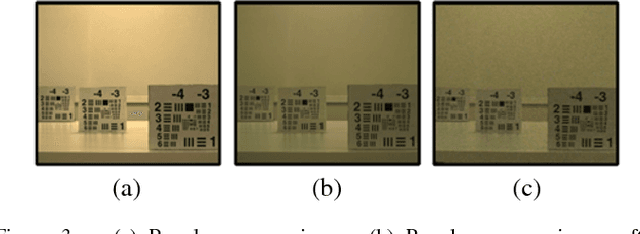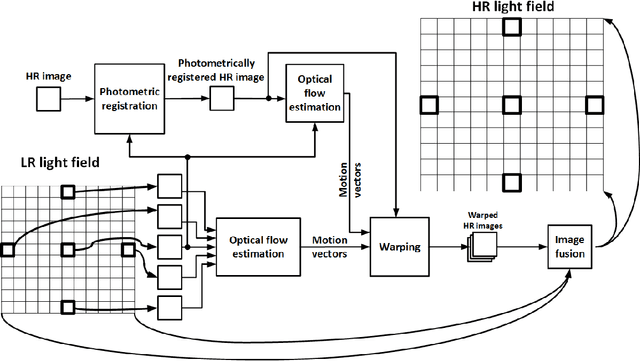Hybrid Light Field Imaging for Improved Spatial Resolution and Depth Range
Paper and Code
Jul 31, 2017



Light field imaging involves capturing both angular and spatial distribution of light; it enables new capabilities, such as post-capture digital refocusing, camera aperture adjustment, perspective shift, and depth estimation. Micro-lens array (MLA) based light field cameras provide a cost-effective approach to light field imaging. There are two main limitations of MLA-based light field cameras: low spatial resolution and narrow baseline. While low spatial resolution limits the general purpose use and applicability of light field cameras, narrow baseline limits the depth estimation range and accuracy. In this paper, we present a hybrid stereo imaging system that includes a light field camera and a regular camera. The hybrid system addresses both spatial resolution and narrow baseline issues of the MLA-based light field cameras while preserving light field imaging capabilities.
 Add to Chrome
Add to Chrome Add to Firefox
Add to Firefox Add to Edge
Add to Edge